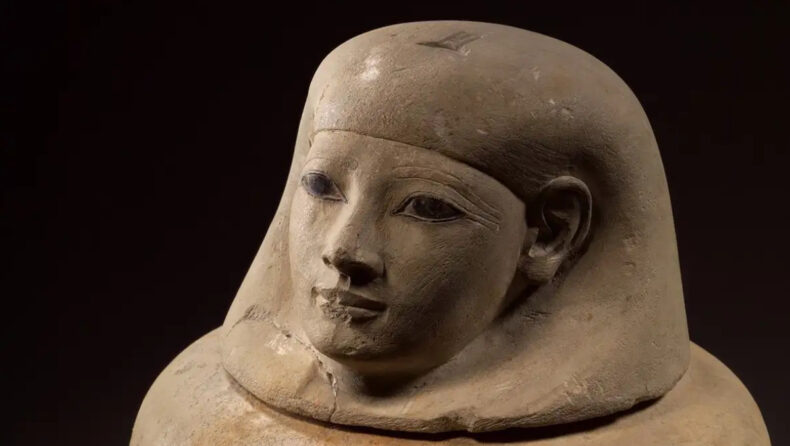Scientists have successfully recreated the “scent of eternity,” a fragrance used in the mummification of ancient Egyptians, specifically a noblewoman named Senetnay, over 3,500 years ago. This project was led by a German team and involved the collaboration of a French perfumer. The researchers analyzed balm specimens taken from jars containing the mummified organs of Senetnay, shedding light on the intricate and complex nature of the balms used during that era. The recreated scent will be part of an upcoming exhibit at the Moesgaard Museum in Denmark, providing visitors with an immersive multisensory experience of ancient Egyptian mummification.
Table of Contents
Ingredients of the “Scent of Eternity”
The scientists examined balm residue from canopic jars that had contained Senetnay’s lungs and liver. They discovered that the balms used in her mummification included a complex blend of beeswax, plant oils, fats, bitumen, pine resins, a balsamic substance, and tree resin. These ingredients were not only a testament to Senetnay’s high social status but also showcased the sophistication of the embalming process during that period.

The researchers also noted that the balms used for Senetnay were not identical. One of the balms contained an aromatic resin that was not found in the other, suggesting that the ancient Egyptians had organ-specific mummification ointments. This finding highlights the meticulous care with which these balms were created and the significance of different ingredients based on the individual’s role in society.
Trade Networks of the Ancient Egyptians
The presence of exotic substances such as dammar or Pistacia tree resin in the balms indicated that rare and expensive materials were used for Senetnay’s embalming. The inclusion of such ingredients raises questions about the extent of trade networks during the mid-second millennium BCE. Certain resins, like larch tree resin, likely originated from the northern Mediterranean and central Europe, while dammar resin was exclusive to Southeast Asian tropical forests. The use of these materials suggests that the Egyptians engaged in extensive trade to acquire them, further highlighting their advanced civilization and international connections.
The “Scent of Eternity” Recreated
To recreate the “scent of eternity,” the scientists worked closely with a French perfumer named Carole Calvez. Using their findings from the analysis of the balm residue, Calvez meticulously recreated the scent, allowing visitors to the Moesgaard Museum in Denmark to experience it firsthand.
Barbara Huber, a doctoral researcher at the Max Planck Institute of Geoanthropology in Germany and one of the authors of the study, expressed her hope that this olfactory experience would enable visitors to “truly ‘breathe in’ a fragment of antiquity.” The exhibition is expected to provide an immersive, multisensory experience for attendees, offering a glimpse into the mysterious world of ancient Egyptian mummification.

Connecting with the Past Through Scent
This project highlights the power of scent in connecting with the past. While scientific analyses, fossil studies, and genetic research have allowed us to reconstruct the appearances of ancient humans and extinct creatures, the recreation of historical scents has been a rare opportunity. Scent has a unique ability to trigger memories and emotions, making it a powerful tool for immersing people in historical experiences.
The “scent of eternity” serves as a reminder of the advanced knowledge and skills possessed by the ancient Egyptians, as well as their intricate trade networks that spanned continents. It also showcases the dedication and care that went into preserving the bodies and memories of individuals like Senetnay, providing us with a deeper understanding of their society and culture.
Dr. William Tullett, an expert in sensory history at the University of York, emphasized the significance of these scents in the context of ancient Egyptian spirituality and social status. While the aroma of larch resin or bitumen may evoke different associations for modern individuals, it carried profound meanings for the ancient Egyptians. By recreating these scents, we gain insight into their world and the role of fragrance in their rituals and customs.
Incorporating the “scent of eternity” into the Moesgaard Museum’s exhibit not only enriches our understanding of history but also allows us to experience it in a uniquely sensory way. It demonstrates the power of scent in preserving and reliving the past, making history come alive through our sense of smell.
Read More: ASEAN diplomats review stalled Myanmar peace plan













